- Empty cart.
- Continue Shopping
MURANO GLASS AND GLASS-MAKING FOR CHANDELIERS
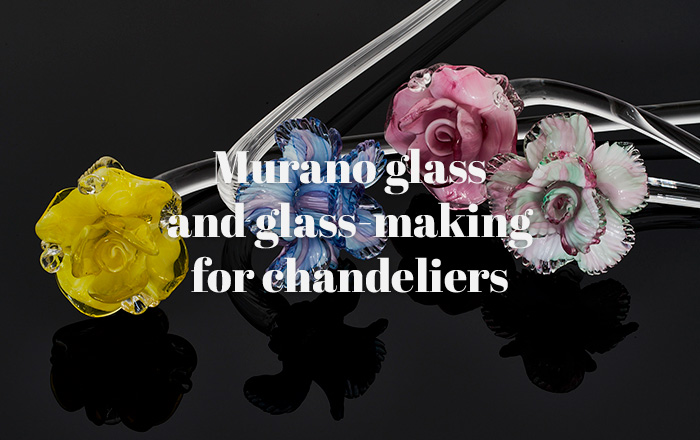
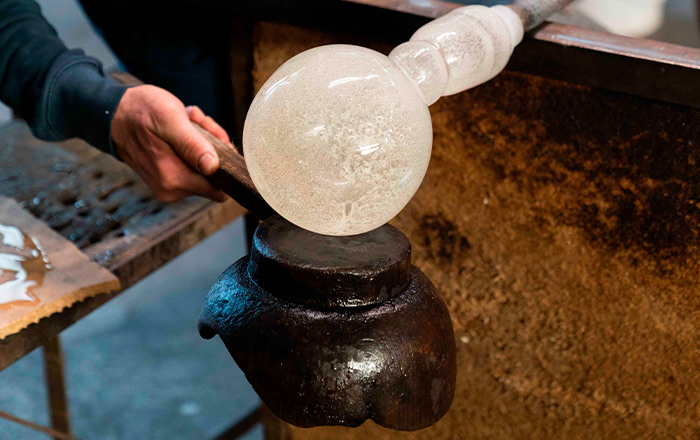
THE VENETIAN MASTER GLASSMAKERS: A JOURNEY THROUGH THE HISTORY OF AN ANCIENT ARTISAN TRADITION
Although today, the workshops of Venetian master glassmakers are located in the area surrounding Venice, when one thinks of Venetian glass, one immediately thinks of Murano.
But why is Murano known as the “island of glass”?
Glass-making is an ancient art and, since the period of the Republic of Venice, it has been a precious source of wealth.
It was precisely in 1291 that the Doge decided to move the glass furnaces to a single island: Murano.
This choice had a dual function. First of all, to contain the risks of frequent fires that the presence of the ovens and furnaces entailed (click here – to find out more); secondly, as a protection and safeguard of the secrets of glass-making by controlling the master glassmakers.
There were many foreign powers that wanted to compete with Venice, but they did not know their techniques and that is why the master glassmakers were supervised and protected. In fact, they could not leave the country taking the secrets of glass with them.
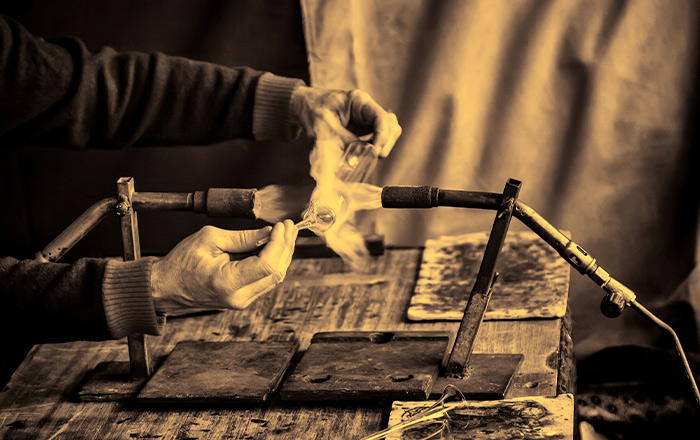
MURANO AND THE ART OF GLASS, A TRADITION PRESERVED OVER THE CENTURIES
One of the effects of the concentration of master glassmakers on the island of Murano was the exchange of techniques and new ideas that led to significant innovations in glass-making itself such as, for example, the creation of Venetian crystal – the first truly transparent glass in the world.
Despite the precautions taken by the Doge, however, many glassmakers managed to escape with their wealth of experience and artisan knowledge, throwing Venice into a period of crisis that lasted several centuries.
The turning point came with the introduction of Murano glass in the creation of chandeliers.
It was the famous Master Giuseppe Briati who invented the Murano chandelier with flowers – still today, one of the most sought-after styles in the world – for which the master glassmakers became and remained for many centuries synonymous with producers of luxury items throughout Europe.
Among the most famous Murano chandeliers in history, we recall the chandelier of the ballroom of Palazzo Alliata di Pietratagliata (Palace Alliata of Pietratagliata) – the largest chandelier in Italy! – and the chandelier still hanging today in the palace of Frederick IV of Denmark.
The Venetian glass-making techniques have been handed down unchanged over the centuries from generation to generation and, still today, the art of Murano glass is one of the Italian artisan excellences exported all over the world.
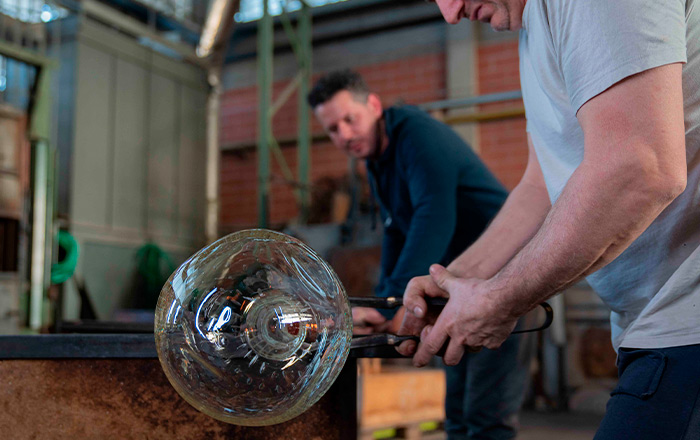
THE MASTER GLASSMAKER AND HIS HELPERS: HOW MURANO GLASS WAS BORN
The master glassmaker is not a simple glassmaker, but a real artist who has to have a wealth of skills and also a certain level of physical strength.
Just think of the high temperatures to which those who work with glass are constantly subjected to, think of the tools they use to work (hot pliers, wooden laths, “canna da soffio, da levar e da supiar” (blowpipe, for blowing and for gathering), “cazza da infornar, da missiar e dai traghettar” (shovel to pour raw materials inside crucible, to mix them and to transport them), just to name a few), think of the weight of the incandescent bolo (lump of molten glass that is removed from the crucible with a barrel) and of the rapidity of the movements and gestures of their work.
Furthermore, they must also be able to interpret technical drawings but, above all, the master glassmaker designs, creates, models and transforms an idea into something real starting from a powder – silica sand – which is transformed into an incandescent paste with heat until it becomes a solid element.
Today, one can attend courses to learn the art of glass. A process that includes education in the artistic and humanistic fields, but in which theoretical training cannot be separated from practical training in a workshop to learn the various processing techniques, such as, for example, glass blowing, torch work or watermark.
And before becoming a master glassmaker, there is a lengthy education process that passes through a rigid hierarchy.
To produce and manually work the elements of a Murano glass chandelier, the master needs numerous assistants and directs them just like an orchestra conductor.
Each assistant has a name and a specific task in the production process and in the creation of the glass element. Thus, in addition to the master, there is also “il servente e il serventino” – the first and second helper of the master – “il garzone, il garzonetto e il forcellante” (other names of helpers in the glass-making process).
The glass paste must be prepared during the night, by inserting the raw materials necessary for the following day’s work into the oven at 1,200 degrees. Silica sand can be combined with various other powders and materials such as sodium oxide, arsenic nitrate, zinc or calcium oxide, depending on the type of glass to be obtained.
The heat creates a soft and malleable material, which is worked by the master glassmaker and their assistants according to the chosen technique and once finished, the element is inserted into another furnace at around 500 degrees, which is then turned off and left to cool for a day or so. This treatment avoids breaking the glass itself.
It is interesting to know that the average age of master glassmakers is fifty years and that about 60% still live in Murano.
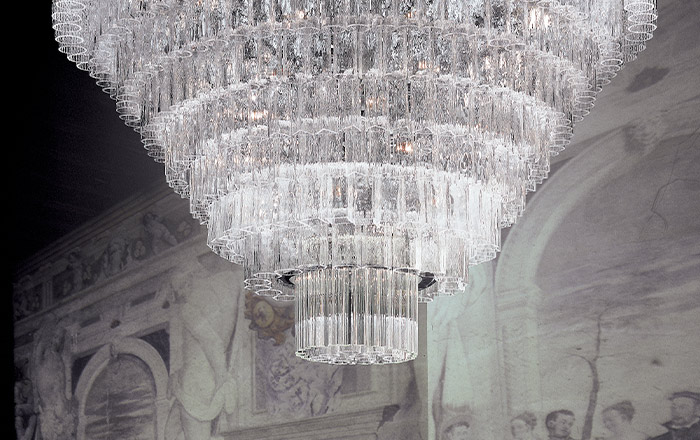
PATRIZIA VOLPATO BRINGS MURANO GLASS CHANDELIERS AROUND THE WORLD
Murano glass is one of the basic elements in almost all of the chandelier collections by Patrizia Volpato chandeliers, as they include the tradition of Venetian glass and they bring it to the world with innovation and creativity.
Research and technology that respond to modern needs and care for sustainability are added to the craftsmanship of glass made by Venetian master glassmakers.
The collections hand down the ancient processing techniques with a modern and contemporary design such as, for example:
- Venezia whose main element is the fringe in hand-sewn Murano glass beads;
- Iconica which recreates the nobility of coloured Murano glass flowers and leaves;
- Glace whose proposals present the processing of hammered glass;
- Intrecci – a collection of lamps and chandeliers that recall the design of the Venetian chandelier with wide arms.
Discover all of the Patrizia Volpato collections and decorate your home with a precious aa nd unique lighting element.





